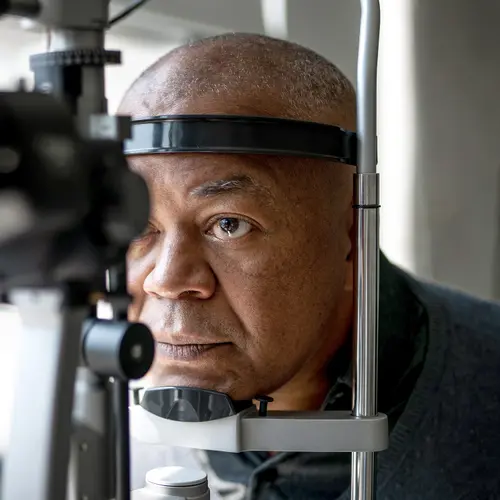Although there’s no cure for wet macular degeneration, treatments can slow the disease and prevent your eyesight from getting worse. If you start treatment early enough, you might be able to regain some of your lost vision.
The macula is the part of the retina (the back of your eye) you need to see straight ahead. When you have age-related macular degeneration (AMD), the macula is damaged.
AMD comes in two types: wet and dry. The dry type is more common than the wet type.
When you have dry AMD, the macula gets thinner as you age, and protein deposits grow. These deposits are called drusen. Researchers haven’t found a specific way to treat dry AMD.
Wet AMD happens when abnormal blood vessels form under the retina. Blood and other fluids then leak from the vessels, scarring your macula. Several treatments are available for this type.
Your treatment choice will depend, among other things, on how advanced your wet AMD is.
Wet AMD Injections
Your doctor will most likely recommend injections of anti-VEGF medicine for your wet AMD.
Your body makes a protein called vascular endothelial growth factor (VEGF). It helps your body form new blood vessels. Because wet AMD is a problem of abnormal blood vessels, doctors can treat it with drugs that block VEGF.
The main medicines of this type are:
- Aflibercept (Eylea)
- Bevacizumab (Avastin)
- Brolucizumab (Beovu)
- Ranibizumab (Lucentis)
Angiopoietin-2 is another protein involved in blood vessel formation. Ang-2 inhibitors help stabilize these fragile new blood vessels so they don't leak. It also makes vessels less sensitive to the effects of VEGF.
VEGF/Ang-2 inhibitors include:
You get these drugs injected into your eye after it has been numbed.
Implants
One of the medications you can get for wet AMD, ranibizumab, also comes as an implant called Susvimo. A doctor inserts it into the white part of your eye. They’ll inject more ranibizumab into it every 6 months.
Nutritional Supplements
Your doctor also may recommend you take supplements using something called the AREDS2 formula.
“AREDS” stands for Age-Related Eye Disease Study. The study found that a certain combination of vitamins and minerals helped with both wet and dry macular degeneration. Researchers later tweaked the formula, giving it the name AREDS2.
The supplements are in higher doses than a regular multivitamin. And you can’t get the benefit of these nutrients from the levels you get in your diet.
The formula contains:
- Cupric oxide (copper)
- Lutein (an antioxidant)
- Vitamin C
- Vitamin E
- Zeaxanthin (an antioxidant)
- Zinc oxide
AREDS2 supplements are most helpful to slow down dry AMD. But if you have wet AMD in one eye and good vision and dry AMD in the other, AREDS2 supplements can slow down the AMD in the eye with good vision.
Note that because AREDS2 supplements have very high amounts of vitamins and minerals, they may change the way your body digests food or the way that other medicines work in your body.
You can get these supplements at many drugstores or online. Ask your doctor for a specific brand recommendation.
Photodynamic Therapy
This wet AMD treatment uses medicine that reacts to certain types of light and a laser to activate that medicine. At the start of the treatment session, your health care professional will inject the medicine into a vein in your arm. The medicine then pools in the abnormal blood vessels in your eye.
Next, you’ll get an eyedrop that numbs your eye. When the doctor shines a laser into your eye, it interacts with the medication, activating it. This creates clotting in the blood vessels, sealing them off. This stops more fluid from leaking.
Photodynamic therapy can’t restore vision you’ve already lost. But it may slow down any damage that’s happening to your central vision.
Like most procedures, there are some risks. They include:
- A new blind spot
- Back pain related to injection of the medicine
- Photosensitivity reactions like sunburn if exposed to direct sunlight right after the procedure
- Reactions in the skin where the light-activated medicine was injected
- Temporary loss of visual sharpness (can be severe, but this is rare)
Macular Degeneration Laser Surgery
Doctors rarely recommend this treatment, which is also called laser photocoagulation, for wet AMD. The goal is the same as photodynamic therapy – to seal off leaking blood vessels.
After you get drops to numb your eye, the doctor will use a laser to burn parts of the macula. This seals the leaking blood vessels.


